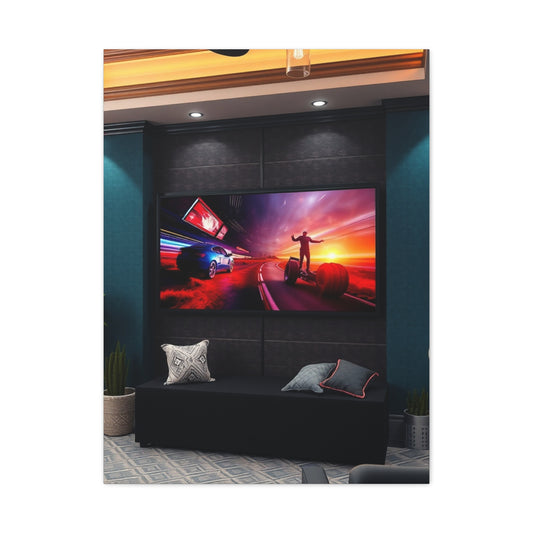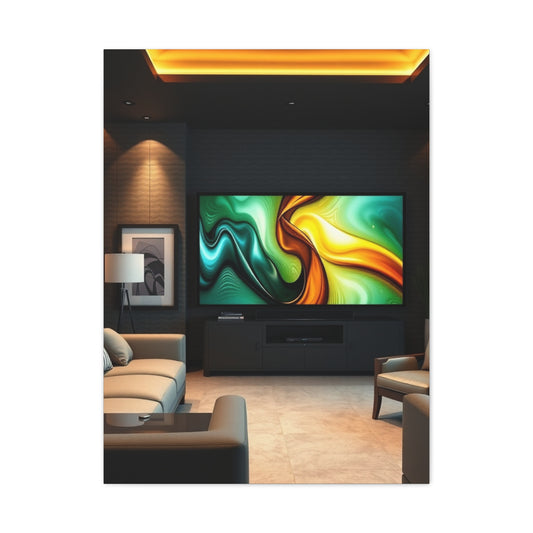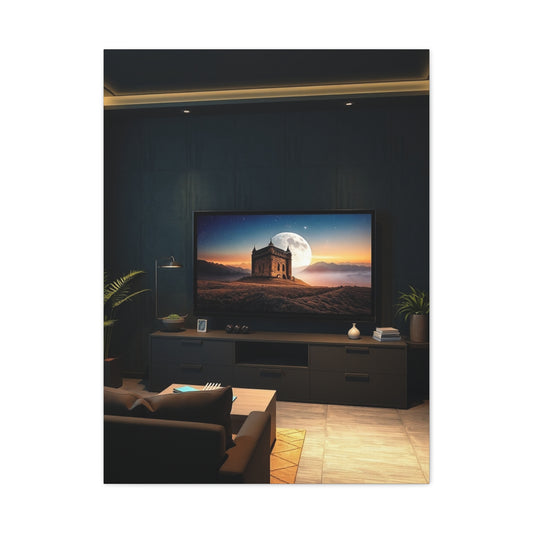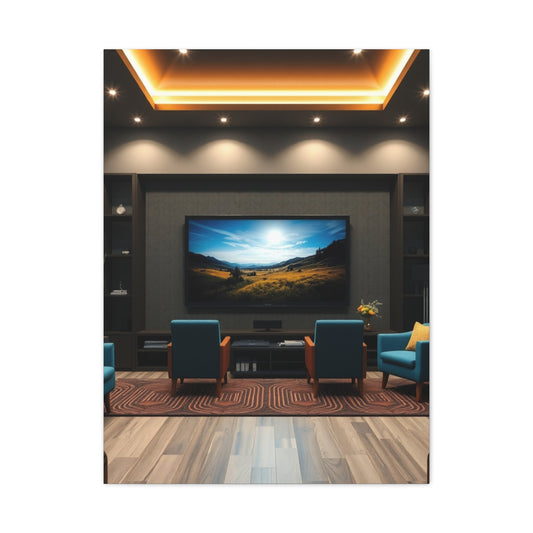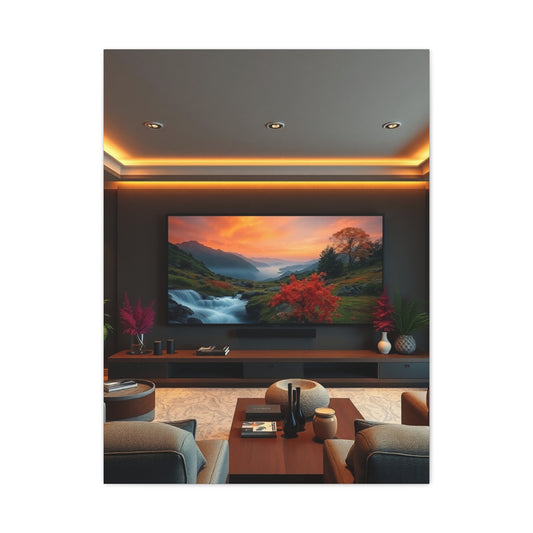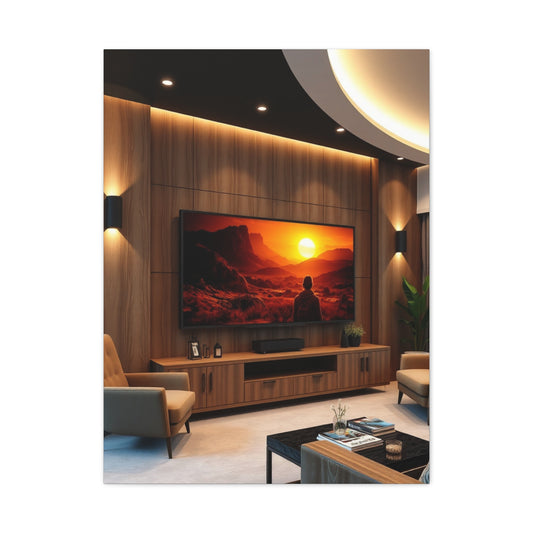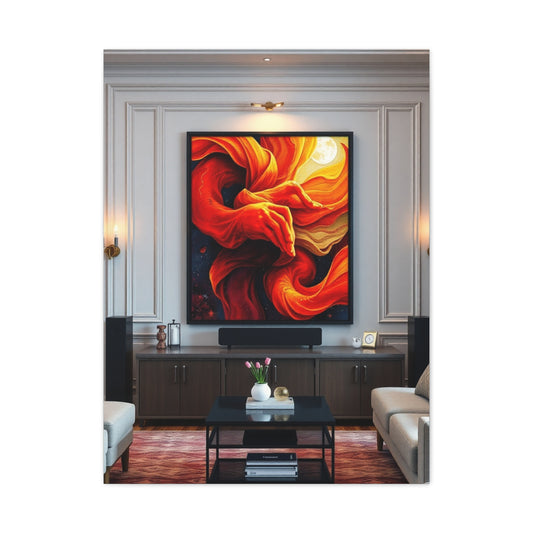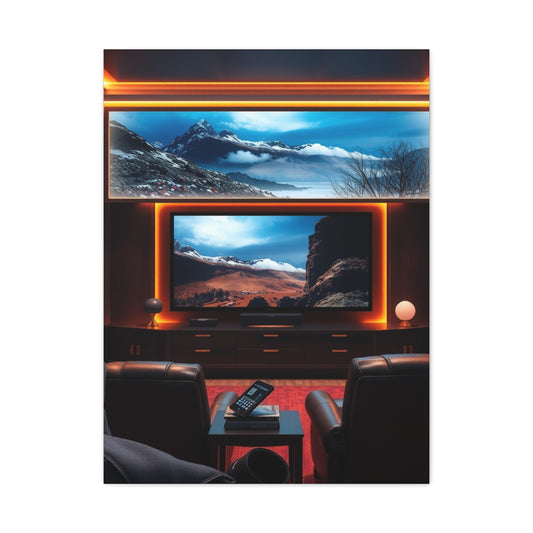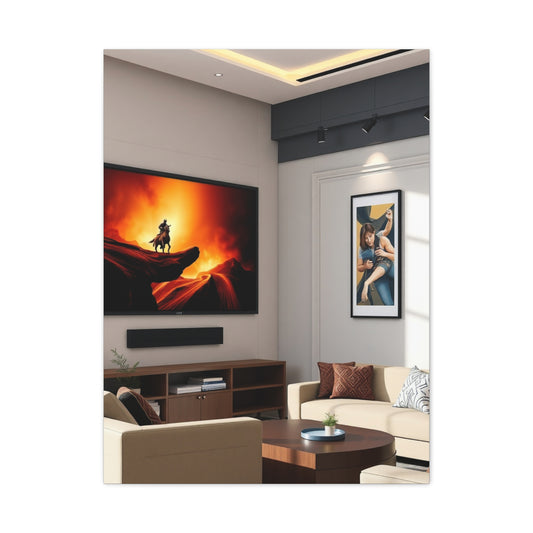-
Home Theatre Decor Art Supreme Canvas Wall Art & Canvas Print
Regular price From $141.23 USDRegular priceUnit price per -
Masterpiece Home Theatre Decor Art Vision Wall Art & Canvas Print
Regular price From $141.23 USDRegular priceUnit price per -
Home Theatre Decor Art Supreme Gallery Wall Art & Canvas Print
Regular price From $141.23 USDRegular priceUnit price per -
Collection Home Theatre Decor Art Art Wall Art & Canvas Print
Regular price From $141.23 USDRegular priceUnit price per -
Elite Home Theatre Decor Art Vision Wall Art & Canvas Print
Regular price From $141.23 USDRegular priceUnit price per -
Home Theatre Decor Art Luxury Canvas Wall Art & Canvas Print
Regular price From $141.23 USDRegular priceUnit price per -
Vision Home Theatre Decor Art Art Wall Art & Canvas Print
Regular price From $141.23 USDRegular priceUnit price per -
Home Theatre Decor Art Refined Canvas Wall Art & Canvas Print
Regular price From $141.23 USDRegular priceUnit price per -
Supreme Home Theatre Decor Art Collection Wall Art & Canvas Print
Regular price From $141.23 USDRegular priceUnit price per
From Posters to Masterpieces: Inspiring Home Theater Wall Art
Creating a captivating home theater is about more than just having a large screen and high-quality sound. The atmosphere of the room plays a significant role in enhancing the overall movie-watching experience. One of the most effective ways to elevate your home theater is through wall art. Walls in a home theater often go unnoticed, but they have the potential to transform the mood and character of the room completely. Carefully chosen prints, canvases, and decorative pieces can bring a sense of luxury, creativity, and cinematic charm to your space. By selecting the right wall art, you can turn your home theater into an immersive escape, making each movie night an experience to remember.
The Importance of Wall Decor in Home Theaters
Walls in a home theater serve as a canvas for creativity and expression. While seating, sound systems, and lighting are essential, wall decor sets the tone of the entire room. Movie posters, themed artwork, and contemporary prints can create a sense of identity and style that resonates with your cinematic preferences. The addition of wall decor does not just enhance the visual appeal but also provides a psychological impact, immersing viewers into the cinematic world. Even subtle additions such as framed prints or abstract pieces can evoke a feeling of grandeur and sophistication. Wall art is a versatile and risk-free method to experiment with trends, colors, and themes without committing to permanent design changes.
Movie Room Wall Decor: Bringing Cinema to Life
Celebrating the art of cinema within your home theater is an excellent way to express your passion for films. Classic movie posters, modern graphic prints, and thematic canvases can all contribute to the aesthetic of the room. A well-chosen poster of a favorite film can instantly create a nostalgic connection, while original artwork or high-quality reproductions can elevate the sophistication of the space. Wall decor can also reflect the genre of movies you love, whether it’s drama, action, comedy, or fantasy. Incorporating cinema-inspired pieces adds personality to the room and creates conversation starters for guests. This approach allows your home theater to be more than just a functional space—it becomes a curated gallery that celebrates the art form itself.
Pro Tips for Home Theater Wall Decor
Enhancing a home theater requires a balance between style and functionality. Patterns, textures, and materials all contribute to the overall design. Art deco-inspired rugs and patterned curtains can provide visual dimension while maintaining a sense of elegance. Metallic accents such as silver, gold, and copper can be integrated through artwork, furniture, and decor elements to create a glamorous effect reminiscent of classic Hollywood. Choosing prints that highlight iconic film locations, famous actors, or timeless cinematic moments can help reinforce the theme of your home theater. Multi-panel canvases can add depth and intrigue to walls, while single large-format prints offer a bold statement. The goal is to curate an environment that invites viewers into the world of cinema from the moment they enter the room.
Curating a Cinematic Style
When designing your home theater, deciding on a theme or style is crucial. Whether you prefer a classic, retro theater ambiance or a modern, minimalist aesthetic, wall decor can reinforce your chosen style. Classic themes may include vintage film posters, sepia-toned prints, or iconic black-and-white photography. Contemporary styles might favor metallic finishes, abstract representations of cinematic scenes, or minimalist canvases. Neutral walls provide a versatile backdrop that allows artwork to stand out, while bold-colored walls can add drama and energy. Incorporating consistent color palettes, textures, and framing styles creates harmony and cohesion in the room, ensuring that the walls complement the overall cinematic experience rather than compete with it.
Color Schemes and Mood in Home Theater Wall Art
Color plays a critical role in influencing the mood and atmosphere of a home theater. Blue is a popular choice for wall decor as it evokes calmness and focus while enhancing the viewing experience. Shades from midnight blue to teal can add depth and sophistication. Neutral tones such as black, beige, or gray provide a contemporary and elegant backdrop, allowing metallic or colorful accents to pop. Combining dark and light tones can create contrast and drama, enhancing the immersive effect of the theater. When selecting artwork, it is important to consider how the colors interact with lighting, furniture, and other decor elements to maintain a balanced and inviting space.
Home Theater Wall Art Sizes and Placement
Proper sizing and placement of wall art are essential to achieving visual impact. Art hung above furniture such as couches, cabinets, or consoles should ideally measure between two-thirds and three-quarters of the furniture's width. This ensures that the artwork is proportionate to the room and does not appear too small or overwhelming. Vertical and horizontal spacing should be considered carefully to maintain balance and symmetry. Large-format canvases work well as central focal points, while smaller grouped prints can create a gallery-style effect. Placement should also consider sightlines and viewing angles to ensure that the artwork enhances the experience without distracting from the screen.
Exploring Shapes and Formats
The shape and format of wall art can dramatically affect the visual dynamics of a home theater. Single-piece canvases provide a bold, minimalist look, while multi-panel formats such as three- to five-piece canvases create movement and intrigue across the wall. Hexagonal or irregular shapes can add a playful and unconventional touch. The choice of format should align with the overall design theme and the scale of the room. For example, a long, wide wall may benefit from multi-panel artwork, while a compact space may be better suited to a single large canvas or a carefully arranged grouping of smaller pieces. Choosing the right format helps achieve visual harmony and enhances the cinematic atmosphere.
Trending Wall Art Themes for Home Theaters
Themed wall art can dramatically enhance the ambiance of your home theater by immersing viewers in a cohesive cinematic experience. Popular themes include classic Hollywood, vintage cinema, modern filmography, and iconic TV series. Classic Hollywood-inspired decor often features black-and-white portraits of legendary actors, golden-age film posters, and art deco motifs that evoke the glamour and sophistication of the 1920s to 1950s. Vintage cinema styles focus on timeless posters and retro prints from iconic films, offering a nostalgic feel for movie lovers who appreciate the history of film. Modern filmography and contemporary wall art often feature stylized or abstract representations of favorite movies, directors, or characters, combining creativity with a sleek, minimalist aesthetic. For fans of television, wall art inspired by popular series can bring personality, humor, and a pop-culture element to the room. Themed wall art creates a visual narrative that complements the films being watched, transforming the theater into an engaging storytelling space.
Incorporating Pop Culture References
Pop culture wall art allows you to inject humor, style, and familiarity into your home theater. From cult classics to blockbuster hits, pieces inspired by well-known movies, TV shows, and music create a playful and interactive environment. Posters or prints referencing iconic scenes or quotes can spark conversation and make the space feel more personal and relatable. Incorporating recognizable imagery from films or shows you love creates a connection between the viewer and the content, making movie nights more immersive and enjoyable. Additionally, pop culture art is versatile, offering a wide range of styles—from realistic reproductions to abstract interpretations—that can seamlessly integrate with your existing decor. By curating a collection of pop culture-inspired pieces, you can balance entertainment with visual sophistication.
Metallic Accents and Luxurious Finishes
Adding metallic accents to wall art can elevate a home theater, giving it a polished, sophisticated, and luxurious atmosphere. Gold, silver, and bronze finishes catch and reflect light, adding subtle depth and dimension to the space. Metallic frames around canvases, mirrors, or prints can enhance the elegance of classic and modern designs alike. In addition, artwork with metallic textures or accents can be paired with other decor elements, such as furniture or lighting fixtures, to create a cohesive, high-end aesthetic. The use of metallics is particularly effective in contemporary home theaters that feature neutral walls and minimalist furniture. It adds visual interest without overpowering the overall design and contributes to the feeling of a cinematic, star-studded space.
Choosing Colors to Set the Mood
Color is a powerful tool when designing a home theater. The palette you choose can affect the atmosphere, comfort, and overall experience of the room. Deep blues, rich burgundies, and classic reds are popular choices for creating a dramatic and immersive environment. These hues evoke a sense of luxury and focus attention on the screen, enhancing the viewing experience. Neutral tones like black, beige, or gray provide a versatile backdrop that allows artwork and other decorative elements to stand out. Combining neutral walls with vibrant or metallic accents can create a visually striking contrast. Additionally, considering complementary colors within your artwork, furniture, and lighting can create harmony and balance throughout the space. Thoughtful color selection ensures that the walls enhance the cinematic mood rather than distract from it.
Wall Art Placement Strategies
Proper placement of wall art is crucial to achieving visual impact and maintaining balance in the room. Artwork should be positioned at eye level for seated viewers, ensuring it is easily visible without diverting attention from the screen. Large-format pieces work well as focal points on main walls, while smaller grouped prints can fill empty spaces and create a gallery-like effect. It is important to maintain proportionality between furniture and artwork; pieces that are too small may appear lost, while oversized items can overwhelm the room. For symmetrical arrangements, align the center of the artwork with the central axis of the furniture or wall. Asymmetrical layouts offer a more dynamic, contemporary feel but should still consider balance and spacing. Proper placement allows the walls to complement the viewing experience while maintaining a visually appealing and cohesive environment.
Multi-Panel and Split Canvas Designs
Multi-panel canvases and split designs have become increasingly popular for home theaters. These formats offer movement, depth, and a dynamic visual experience that single panels cannot provide. A three-panel canvas, for instance, can divide a single cinematic image across multiple sections, creating intrigue and visual rhythm. Larger multi-panel sets can cover expansive walls, transforming them into a feature statement. Split canvases are ideal for highlighting iconic scenes or characters, allowing you to experiment with scale and composition. When selecting multi-panel or split designs, it is important to maintain consistency in style, spacing, and color to avoid visual clutter. This approach creates a contemporary, gallery-like atmosphere that enhances the immersive experience of a home theater.
Integrating Lighting with Wall Art
Lighting plays a crucial role in accentuating wall art in a home theater. Soft, dimmable lighting can highlight artwork without distracting from the screen, creating a warm and inviting ambiance. Spotlights or picture lights can draw attention to specific pieces, while LED strips behind canvases or panels can create a subtle glow that enhances depth. Color-changing lights offer the ability to adjust the mood according to the type of film being watched, adding an interactive element to the room. Proper integration of lighting ensures that artwork is visible and impactful without competing with the primary purpose of the space—the movie-watching experience. Lighting and wall decor should work together harmoniously, elevating both aesthetics and functionality.
Textures and Materials in Wall Art
The texture and material of wall art can add another layer of sophistication to a home theater. Canvas, metal, wood, and mixed media pieces each offer unique tactile qualities and visual effects. Canvas prints provide a classic, painterly feel that complements traditional decor, while metal prints offer sleek, modern aesthetics with reflective qualities. Wooden frames or textured panels can introduce warmth and organic character, balancing modern technology with natural elements. Mixed media artworks, combining paint, metal, and fabric, offer depth and intrigue that capture the eye. By carefully considering textures and materials, you can create a layered and visually interesting environment that enhances the overall cinematic experience.
Incorporating Personalized and Custom Art
Personalized and custom wall art allows you to infuse individuality into your home theater. Custom prints featuring favorite quotes, film scenes, or personal photography can make the space uniquely yours. This approach provides creative freedom to match the room’s color scheme, theme, and overall design. Personalized pieces also serve as conversation starters and add sentimental value, making your home theater more intimate and inviting. Custom artwork can be scaled and framed to fit specific wall dimensions, ensuring proportionality and visual balance. By incorporating personalized elements, you create a space that reflects your personality and love for cinema, while maintaining a polished and cohesive aesthetic.
Combining Functionality with Decor
Home theater wall art should not only enhance visual appeal but also contribute to the functionality of the space. Acoustic panels designed as decorative elements can improve sound quality while blending seamlessly with the room’s design. Wall-mounted storage for DVDs or media collections can be integrated into the decor, maintaining organization while adding visual interest. Additionally, frames and canvases can be selected to minimize glare from screens, ensuring that artwork enhances the experience rather than distracting from it. By combining functionality with aesthetics, you ensure that your home theater remains both beautiful and practical for movie-watching sessions.
Seasonal and Rotating Art Displays
Rotating or seasonal wall art allows you to refresh the home theater environment and keep it visually engaging over time. Changing artwork according to holidays, film releases, or personal preferences introduces novelty and excitement. This practice keeps the space feeling dynamic and encourages exploration of different styles, colors, and themes. Rotating displays can be as simple as swapping framed prints or as elaborate as rearranging multi-panel canvases. By periodically updating your wall decor, you maintain a vibrant and immersive environment that continues to delight viewers.
Advanced Home Theater Wall Art Strategies
Once the basic elements of home theater wall decor are in place, advanced strategies can further elevate the cinematic experience. Beyond simple prints and posters, incorporating large-scale artwork, interactive designs, and multi-dimensional pieces can create a more immersive environment. Large-scale canvases draw the eye and serve as focal points, providing a sense of grandeur similar to commercial theaters. Interactive wall art, such as framed chalkboards, magnetic boards, or customizable displays, allows for seasonal updates or personal expression. Multi-dimensional pieces, including layered prints or sculptural art, introduce depth and texture, creating a visual environment that is both dynamic and engaging. Implementing these strategies transforms walls into a centerpiece of the home theater, rather than a background element.
The Role of Lighting in Enhancing Wall Art
Lighting is one of the most important factors in highlighting wall art and establishing the right atmosphere in a home theater. Properly positioned spotlights, sconces, or LED strips can emphasize textures, colors, and metallic finishes while avoiding glare on screens. Adjustable lighting provides control over intensity, allowing for dimmed illumination during movies or brighter settings for social gatherings. Ambient lighting behind artworks, such as LED backlighting, adds depth and drama, making wall pieces appear to float or glow subtly. Layered lighting strategies, combining ambient, task, and accent lights, ensure that each wall element is visible and visually striking without competing with the screen. Thoughtful integration of lighting elevates both the aesthetic and functional aspects of the home theater.
Utilizing Color Psychology in Home Theater Decor
Color has a profound psychological impact on mood, focus, and perception. Understanding color psychology allows you to design a home theater that enhances the movie-watching experience. Deep blues and indigos create a calming and focused atmosphere, ideal for immersive viewing. Rich reds and burgundies evoke excitement and passion, enhancing dramatic scenes. Neutral tones like beige, taupe, and gray provide a balanced backdrop, allowing artwork and metallic accents to stand out while maintaining a sophisticated ambiance. Accent colors, strategically introduced through wall art, can draw attention to focal points and complement the room’s lighting scheme. Thoughtful use of color ensures that the home theater is both visually appealing and psychologically engaging.
Textures, Materials, and Dimensional Art
Textures and materials can add a tactile quality to wall decor, enhancing the sensory experience of the space. Canvas prints provide a classic, matte finish that complements traditional decor, while metallic prints introduce reflective qualities that add luxury and sophistication. Wooden panels or textured frames introduce warmth, balancing modern technology with natural elements. Three-dimensional art, such as sculptural pieces or layered canvases, can create a sense of movement and depth, transforming flat walls into interactive visual landscapes. Combining various materials and textures introduces complexity, allowing viewers to engage not only visually but also on a tactile level, enriching the overall cinematic experience.
Integrating Acoustic Panels as Art
Acoustic panels are essential for optimal sound quality in a home theater, but they can also be designed as decorative elements. Modern acoustic panels come in a variety of colors, shapes, and textures, enabling them to blend seamlessly with wall art. Panels can be framed or printed with customized designs, turning functional elements into visually striking features. Strategic placement of these panels ensures superior sound quality while contributing to the room’s aesthetic coherence. Integrating acoustic elements as art provides dual benefits, enhancing both the auditory and visual aspects of the home theater.
Multi-Panel Layouts for Dramatic Impact
Multi-panel wall art remains a popular choice for home theaters due to its ability to add drama, rhythm, and visual interest. Panels can divide a single image across multiple sections, creating a sense of movement and energy. Large-scale multi-panel arrangements can dominate an entire wall, serving as the room’s centerpiece. Careful attention to spacing, alignment, and proportion ensures that the composition remains balanced and visually appealing. This approach allows for creative experimentation with scale, perspective, and color, giving the room a dynamic, gallery-like feel that enhances the immersive experience of movie-watching.
Curating a Collection of Favorites
A home theater wall can double as a curated gallery, showcasing favorite films, actors, or cinematic moments. Grouping prints by genre, era, or director can create a coherent narrative that reflects personal tastes and enhances thematic immersion. Mixing vintage and contemporary pieces introduces contrast and visual intrigue, while maintaining consistency through color palettes or framing styles ensures cohesion. Curated collections transform walls into storytelling spaces, where each piece contributes to a larger narrative and evokes memories associated with favorite movies. This approach personalizes the home theater, making it both visually captivating and emotionally resonant.
Incorporating Pop Culture and Iconic References
Pop culture references add a playful and relatable element to home theater decor. Posters, prints, or artwork inspired by well-known films, television series, or music can engage viewers and spark conversations. Iconic quotes, memorable scenes, and recognizable characters create familiarity and nostalgia, making the space feel approachable and inviting. Pop culture art can be presented in a variety of styles, from realistic to abstract, ensuring it complements the room’s overall aesthetic. By thoughtfully integrating pop culture references, the home theater becomes a space that celebrates entertainment and cultural touchstones while reflecting personal interests.
Functional Wall Decor Elements
Combining functionality with aesthetics enhances the utility and design of a home theater. Wall-mounted shelves, media storage units, or display cases can be integrated into the decor, maintaining organization while contributing to visual appeal. Frames and canvases can be strategically positioned to minimize screen glare and maximize comfort. Functional wall elements, such as acoustic panels, also enhance sound quality while doubling as art. This approach ensures that the room remains both practical and visually stimulating, balancing comfort, organization, and style.
Seasonal and Rotating Displays
Rotating or seasonal wall art keeps the home theater environment fresh and engaging. Swapping artwork according to film releases, holidays, or personal preferences introduces novelty and excitement. Rotating displays allow experimentation with different styles, colors, and formats without committing to permanent changes. Seasonal updates can reflect mood or theme changes, creating a dynamic and evolving environment that maintains visual interest and encourages regular interaction with the space. This practice ensures that the home theater remains vibrant, stimulating, and inviting over time.
Custom and Personalized Art Options
Custom wall art allows homeowners to infuse their personality into the home theater. Personalized prints featuring favorite quotes, original photography, or bespoke designs make the space uniquely yours. Custom artwork can be scaled, framed, and colored to complement existing decor, ensuring proportionality and cohesion. Personalized pieces add sentimental value and serve as conversation starters for guests. By incorporating custom artwork, the home theater becomes a reflection of individuality, taste, and cinematic passion, enhancing both visual and emotional experiences.
Balancing Minimalism and Statement Pieces
A balance between minimalist design and statement pieces is crucial for an elegant home theater. Minimalist decor relies on clean lines, neutral tones, and selective placement of artwork to create a calm, focused environment. Statement pieces, on the other hand, draw attention and create a sense of drama, serving as visual anchors in the room. Combining these approaches allows for a harmonious design that emphasizes both sophistication and creativity. By carefully selecting and positioning art, homeowners can maintain visual balance while ensuring that key pieces capture attention and enhance the cinematic atmosphere.
Choosing Artwork for Different Viewing Zones
Home theaters often contain multiple zones, such as seating areas, snack stations, or lounge corners. Each zone can feature distinct wall art that complements its function and ambiance. Seating areas benefit from immersive or thematic pieces, while transitional spaces can feature lighter, playful, or abstract designs. This approach ensures that every part of the room contributes to the overall aesthetic and cinematic experience. By tailoring artwork to specific zones, the home theater becomes a cohesive, multi-dimensional space that engages viewers on multiple levels.
DIY Home Theater Wall Art Ideas
Creating your own wall art for a home theater allows for complete customization and adds a personal touch to the space. Do-it-yourself projects can range from simple poster framing to more elaborate mixed media pieces that reflect your favorite movies or television series. For example, you can create a collage of vintage film posters or design your own canvas prints using high-resolution images from classic or contemporary films. DIY projects also allow you to experiment with materials, textures, and finishes that match the overall theme of your theater. By engaging in the creative process, you not only save on costs but also develop a space that is uniquely yours. DIY wall art encourages personal expression and ensures that every piece has a meaningful connection to the cinematic experience.
Framing Techniques and Styles
Proper framing enhances the impact of your wall art and ensures a polished, professional look. Frames can range from minimalist metal or wooden styles to ornate designs inspired by classic cinema aesthetics. The choice of frame should complement both the artwork and the room’s design. Floating frames create a sense of depth by allowing the canvas to appear suspended within the frame, while shadow boxes can add dimensionality to posters or memorabilia. Matte and glare-resistant glass protect prints while maintaining clarity, particularly in spaces with variable lighting. Consistency in framing style across multiple pieces helps maintain a cohesive visual narrative, ensuring that the walls contribute to the overall cinematic ambiance rather than appearing disjointed.
Exploring Textures and Layering
Texture plays a crucial role in elevating home theater wall decor by introducing depth and interest. Layering materials, such as canvas over metal panels or incorporating fabric elements, can create visual richness that enhances the room’s aesthetic. Three-dimensional pieces, including sculptural artwork or relief designs, provide a tactile element that engages the senses and adds dimension to flat surfaces. Layering different textures also allows for subtle contrasts between light, shadow, and color, which can enhance the perception of space and create focal points within the room. By combining multiple textures thoughtfully, you can achieve a cinematic effect that goes beyond traditional wall decor.
Creating Gallery Walls
Gallery walls are an effective way to showcase multiple pieces of art while maintaining harmony and balance. Arranging a collection of posters, canvases, and prints in a cohesive layout allows for the display of favorite films, actors, or artistic interpretations of cinema. Symmetrical layouts convey order and sophistication, while asymmetrical arrangements offer a modern, dynamic aesthetic. Consistent spacing, color schemes, and framing choices help unify diverse pieces into a single visual narrative. Gallery walls also provide flexibility, allowing you to rotate artwork or add new pieces as your interests evolve. This approach transforms home theater walls into curated exhibition spaces that celebrate cinema and personal taste.
Incorporating Memorabilia and Collectibles
Integrating memorabilia and collectibles into wall decor adds depth, authenticity, and character to the home theater. Framed autographs, prop replicas, or limited-edition collectibles can be displayed alongside posters and prints to create a visually interesting and nostalgic environment. Displaying memorabilia in shadow boxes or custom frames preserves the items while making them accessible for viewing. These elements add a personal narrative to the room, reflecting your connection to the films, actors, or franchises you love. Incorporating collectibles allows walls to serve not only as decorative features but also as storytelling elements that enrich the overall cinematic experience.
Choosing the Right Canvas and Print Quality
High-quality canvases and prints ensure that wall art is visually striking and durable. Opt for materials that resist fading and warping, particularly in rooms with controlled lighting or varying temperatures. Resolution and clarity are critical; detailed prints and large-format canvases require high-resolution images to maintain sharpness and visual impact. Canvas textures can vary from smooth to coarse, with different finishes affecting how light interacts with the piece. Matte finishes minimize glare, which is especially important in home theaters where lighting may vary during viewing. Selecting the right quality materials ensures that your wall art remains impressive and visually consistent over time.
Multi-Purpose Art Pieces
Some wall art can serve multiple functions, blending aesthetics with practicality. Acoustic panels designed as decorative elements enhance sound quality while adding visual interest. Magnetic boards or modular wall systems allow for rotating displays and customizable arrangements, offering flexibility without sacrificing style. LED-accented artwork combines light and imagery, contributing to the overall ambiance of the room while serving as functional illumination. Multi-purpose pieces are ideal for home theaters, where balancing style, sound quality, and comfort is essential. By selecting versatile art, you maximize both the visual and functional potential of your walls.
Customizing for Different Room Sizes
The size and layout of your home theater influence wall art choices. In compact theaters, smaller canvases or grouped prints can create intimacy without overwhelming the space. In larger rooms, expansive multi-panel pieces or oversized canvases establish a sense of grandeur and draw attention to focal walls. Placement should consider sightlines from all seating areas to ensure that each viewer experiences the intended visual impact. Scaling artwork to fit the room’s dimensions allows for proportionality and visual balance, preventing the space from feeling cluttered or disproportionate. Tailoring art to room size enhances both aesthetics and the immersive quality of the theater.
Balancing Minimalism and Statement Pieces
Creating a visually appealing home theater often involves balancing minimalist design principles with bold, statement-making artworks. Minimalist walls feature clean lines, neutral colors, and carefully curated pieces that do not compete with the screen. Statement pieces, on the other hand, capture attention and serve as focal points, adding drama and personality. By combining both approaches, you can achieve a cohesive design that emphasizes elegance and creativity. Strategic placement of statement pieces ensures that walls engage viewers without overwhelming them, maintaining harmony between art, furniture, and cinematic elements.
Layering Color and Mood
Color layering is essential for creating a home theater atmosphere that enhances the viewing experience. Neutral base colors provide flexibility, allowing accent colors from wall art and furnishings to stand out. Layered hues can be used to guide the viewer’s attention, highlight specific areas, or evoke desired moods. For example, warm tones like deep reds and golds can evoke a classic theater ambiance, while cooler shades like blue or teal create calm and immersive environments. Combining complementary colors and subtle gradients adds depth and sophistication, ensuring that walls contribute to both aesthetics and the emotional impact of movie-watching.
Incorporating Technology and Interactive Features
Modern home theaters can integrate technology directly into wall art to enhance the cinematic experience. LED-illuminated frames, motion-sensitive panels, and augmented reality artwork offer interactive elements that engage viewers. Digital displays allow for rotating artwork, streaming visual content, or highlighting cinematic trivia during downtime. Integrating technology seamlessly ensures that the space feels cutting-edge while maintaining the overall design aesthetic. Interactive features add a layer of engagement that goes beyond traditional wall decor, making the home theater more immersive and enjoyable for guests and family members.
Outdoor-Inspired and Extended Spaces
For homes with suitable layouts, extending the theater aesthetic to adjoining walls or outdoor areas can create a cohesive entertainment environment. Patio walls, corridors, or lounge areas can feature complementary artwork, murals, or panels that reflect the home theater theme. Incorporating outdoor-safe materials ensures durability while maintaining visual continuity. Extending the cinematic experience beyond the primary theater area creates a cohesive design narrative and allows guests to enjoy a thematic atmosphere throughout the entertainment space. This approach maximizes the impact of wall art and reinforces the immersive quality of your home theater.
Finishing Touches for Home Theater Wall Art
The final details of home theater wall decor are essential for creating a cohesive and immersive cinematic environment. Finishing touches include accent lighting, subtle decorative elements, and complementary furnishings that enhance the overall aesthetic without distracting from the screen. Small additions, such as wall-mounted sconces, LED strips, or directional spotlights, can highlight key artworks and add depth to the space. Decorative molding or trim around frames and canvases contributes to a polished, professional appearance. Thoughtful finishing touches unify the room’s design, ensuring that every element—from artwork to lighting—works together to create an engaging and luxurious movie-watching experience.
Creating an Immersive Cinematic Environment
Home theater walls play a central role in immersing viewers in the cinematic experience. Using a combination of large-scale prints, textured materials, and thematic elements can simulate the feeling of a commercial theater. Wall art can be aligned with the genre or tone of films frequently watched, providing continuity between content and environment. Strategic placement of multi-panel canvases or interactive pieces draws the eye and encourages engagement. The use of neutral tones as a base, accented by bold colors or metallic finishes, helps focus attention on both the screen and decorative elements. By carefully layering visual and tactile details, the home theater becomes an environment where viewers are fully absorbed in the cinematic world.
Highlighting Key Walls and Focal Points
Identifying and emphasizing key walls in a home theater ensures that artwork has maximum impact. The wall behind the seating area, for example, is ideal for large-format or statement pieces, while sidewalls can feature smaller, supporting artworks. Focal points can include oversized movie posters, multi-panel cinematic scenes, or custom designs that reflect personal taste. Balanced arrangements, considering symmetry and spacing, allow the artwork to complement the room without overwhelming it. Highlighting focal walls ensures that every element of decor serves a purpose, whether it is to create drama, establish ambiance, or reinforce the theme of the space.
Integrating Audio-Visual Equipment with Decor
Walls in a home theater often accommodate screens, speakers, and other audiovisual equipment. Integrating these elements seamlessly into the design ensures a cohesive appearance. Acoustic panels can be customized to match artwork or framed prints, maintaining both sound quality and visual appeal. Speakers and projectors can be strategically positioned to avoid obstructing artwork while optimizing sound distribution. Concealed wiring and wall-mounted brackets contribute to a clean, organized look. By harmonizing audio-visual equipment with wall decor, the theater achieves both functionality and sophistication, enhancing the overall viewing experience.
Seasonal and Rotating Artwork
Rotating or seasonal wall art keeps the home theater environment dynamic and engaging. Swapping artwork to reflect holidays, film releases, or personal milestones adds novelty and excitement. Seasonal updates allow for experimentation with new colors, textures, or artistic styles, ensuring that the space evolves over time. Rotating displays can be easily implemented through modular frames, magnetic boards, or interchangeable canvas panels. By refreshing wall decor periodically, homeowners maintain visual interest and create an environment that encourages repeated use and exploration, ensuring that the home theater remains a vibrant and inviting space.
Curating a Balanced Collection
A curated collection of wall art enhances the storytelling aspect of a home theater. Artwork should be selected to reflect personal tastes, favorite films, or thematic elements that resonate with viewers. Balance is achieved by considering scale, color, style, and placement. Mixing large statement pieces with smaller supporting prints creates visual rhythm, while consistent framing or matting maintains cohesion. Curated collections encourage viewers to explore the space and engage with the art, turning walls into more than decorative surfaces—they become an integral part of the cinematic experience.
Customization and Personalization
Custom wall art allows homeowners to infuse their personalities into the theater space. Personalized prints, original photography, or bespoke designs create a unique and intimate environment. Custom artwork can be tailored to fit specific wall dimensions, color schemes, and thematic goals. Incorporating family photos, memorable movie quotes, or creative reinterpretations of classic scenes adds sentimental value. Personalized elements ensure that the home theater is not just a functional space but also a reflection of individual taste, making each visit a special and memorable experience.
Textures, Materials, and Dimensionality
The use of diverse textures and materials adds depth and richness to home theater walls. Canvas, metal, wood, and fabric elements each contribute distinct visual and tactile qualities. Layering textures, such as combining metallic prints with soft canvas pieces, introduces subtle contrasts that enhance visual interest. Three-dimensional artwork, including sculptural panels or relief designs, creates a sense of movement and engagement. Thoughtful integration of materials ensures that the walls feel dynamic and multidimensional, contributing to an immersive cinematic environment where viewers are drawn into both the visuals on the screen and the artistry surrounding them.
Enhancing Mood Through Color
Color selection is central to setting the mood in a home theater. Deep, rich hues like navy, burgundy, and forest green create an intimate and immersive atmosphere, while neutral tones provide a versatile backdrop for highlighting artwork. Accent colors can be introduced through prints, frames, or decorative panels to draw attention to focal points or complement lighting schemes. Layering colors strategically allows for visual hierarchy, guiding the eye and reinforcing the cinematic ambiance. Understanding the psychological impact of color ensures that walls contribute to both the aesthetic appeal and the emotional resonance of the viewing experience.
Technology-Integrated Wall Art
Modern home theaters can incorporate technology directly into wall art for added functionality and engagement. LED-accented canvases, motion-sensitive panels, or digital displays allow for dynamic visual effects. Interactive elements can rotate artwork, stream cinematic images, or display themed content, creating an evolving environment. Technology integration enhances immersion and offers flexibility in design, allowing homeowners to customize the atmosphere based on the type of content being viewed. Incorporating technology ensures that the home theater remains both contemporary and interactive, blending art and functionality seamlessly.
Statement Pieces and Focal Wall Design
Statement pieces provide drama and visual interest, serving as anchors for the overall design. Oversized prints, multi-panel canvases, and custom murals draw attention and establish the tone of the room. Complementing these with supporting pieces ensures cohesion and visual balance. Focal walls should be designed to maximize impact while maintaining harmony with seating arrangements, lighting, and audiovisual equipment. Statement artwork transforms walls into more than decoration; it becomes the centerpiece of the home theater, shaping the viewer’s perception and enhancing the cinematic experience.
Maintenance and Longevity of Wall Art
Maintaining wall art is crucial to preserving both its appearance and impact over time. Canvas and print care includes dusting, avoiding direct sunlight, and ensuring proper humidity levels. Metallic or textured finishes may require gentle cleaning to prevent tarnishing or wear. Rotating displays and modular frames make it easy to refresh the space without compromising the artwork's integrity. Regular maintenance ensures that the home theater remains visually appealing, allowing each piece to continue contributing to the immersive environment for years to come.
Outdoor and Transitional Spaces
For homes with suitable layouts, extending the cinematic theme beyond the primary theater can enhance cohesion and impact. Adjacent hallways, lounge areas, or outdoor entertainment spaces can feature complementary wall art, murals, or panels. Using durable, weather-resistant materials ensures longevity in transitional or outdoor spaces. Extending the aesthetic creates a continuous thematic experience, reinforcing the immersive atmosphere and providing guests with a sense of continuity throughout the entertainment area.
Conclusion:
The finishing touches of home theater wall decor are what transform a functional room into a luxurious, immersive cinematic environment. From statement pieces and focal wall design to integrated lighting, technology, and personalized elements, every detail contributes to the atmosphere and emotional impact of the space. Seasonal rotations, curated collections, and attention to textures, colors, and materials ensure that walls remain visually dynamic and engaging. Thoughtful integration of functionality, maintenance, and extended spaces completes the design, providing a home theater that is both aesthetically stunning and practically optimized. By considering all aspects of wall art, homeowners can create a theater that offers an unparalleled movie-watching experience, elevating every film into a memorable cinematic event.

